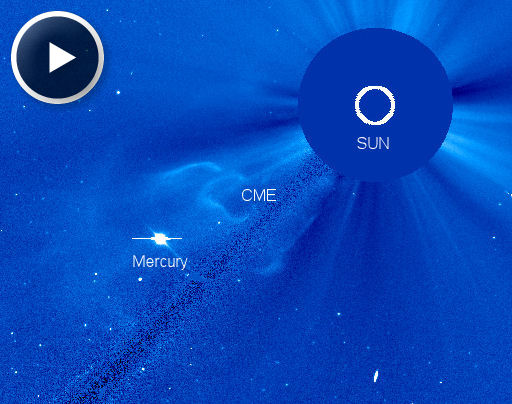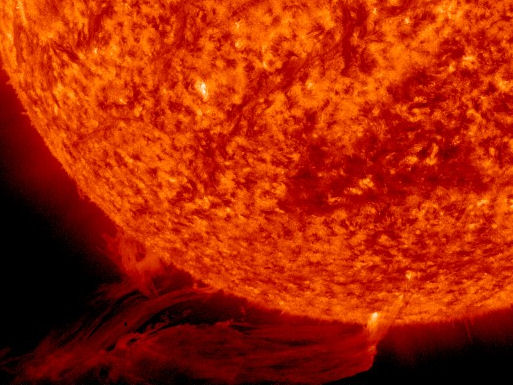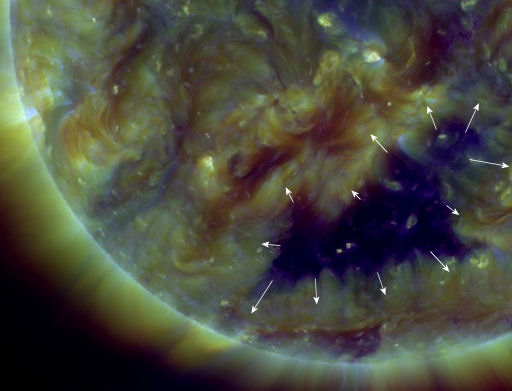They came from outer space--and you can have one! Genuine meteorites are now on sale in the Space Weather Store. | | |
SLIM CHANCE OF FLARES: NOAA forecasters estimate a 10% chance of M-class solar flares and a mere 1% chance of X-flares today. The probable source would be sunspot AR1660, which is almost directly facing Earth. Solar flare alerts: text, voice.
FILAMENT ERUPTIONS: Two long filaments of solar magnetism have erupted on the sun today, Jan. 23rd, hurling bright coronal mass ejections into space. This one passed directly in front of Mercury:

A second CME sailed high over the sun's north pole: image. Earth was not in the line of fire of either eruption.
NASA's Solar Dynamics Observatory recorded the eruption that hurled the CME in front of Mercury. Click to set the scene in motion:

These events show that sunspots are not required for solar activity. Neither of the filaments that erupted on Jan. 23rd were rooted in a sunspot's dark core. Solar flare alerts: text, voice.
Realtime Space Weather Photo Gallery
SOUTHERN CORONAL HOLE: A hole in the sun's atmosphere--a "coronal hole"--has opened up in the sun's southern hemisphere, and it is spewing a stream of solar wind into space. Extreme UV cameras onboard NASA's Solar Dynamics Observatory photographed the dark gap during the early hours of Jan. 23rd:

Coronal holes are places in the sun's atmosphere where the sun's magnetic field opens up and allows solar wind to escape. A stream of solar wind flowing from this particular coronal hole should reach Earth's orbit on Jan. 26-27. Whether it will actually hit our planet is unknown. Because of the coronal hole's high southern latitude, the solar wind it emits might miss our planet, sailing high over our own South Pole. High-latitude sky watchers should nevertheless remain alert for auroras. Aurora alerts: text, voice.
Realtime Aurora Photo Gallery
AWASH IN JUPITER RADIO BURSTS: The planet Jupiter is a powerful source of shortwave radio bursts. They come from natural radio lasers in the giant planet's polar magnetosphere that sometimes sweep past Earth as Jupiter rotates. On Jan. 21st, as Jupiter and the Moon were converging high in the midnight sky, a series of Jupiter's radio laser beams hit Earth. Amateur astronomer Thomas Ashcraft recorded the static-y sounds coming from the loudspeaker of his shortwave radio telescope in New Mexico:

Dynamic spectrum courtesy of Wes Greenman, Radio Alachua Observatory
"Sometimes when people are outside Jupiter-gazing they might also be awash in Jovian radio beam sweeps and not know it," says Ashcraft. "On Sunday, a Jovian radio storm produced a few minutes of strong radio waves. As I was outside my observatory looking up at Jupiter I was also hearing the waves on my radio telescope speakers and realized that my own body was, in that moment, being bathed in electromagnetic beams from Jupiter. What a nice feeling!"
Realtime Space Weather Photo Gallery
Realtime Comet Photo Gallery
Realtime Noctilucent Cloud Photo Gallery
[previous years: 2003, 2004, 2005, 2006, 2007, 2008, 2009, 2011]

